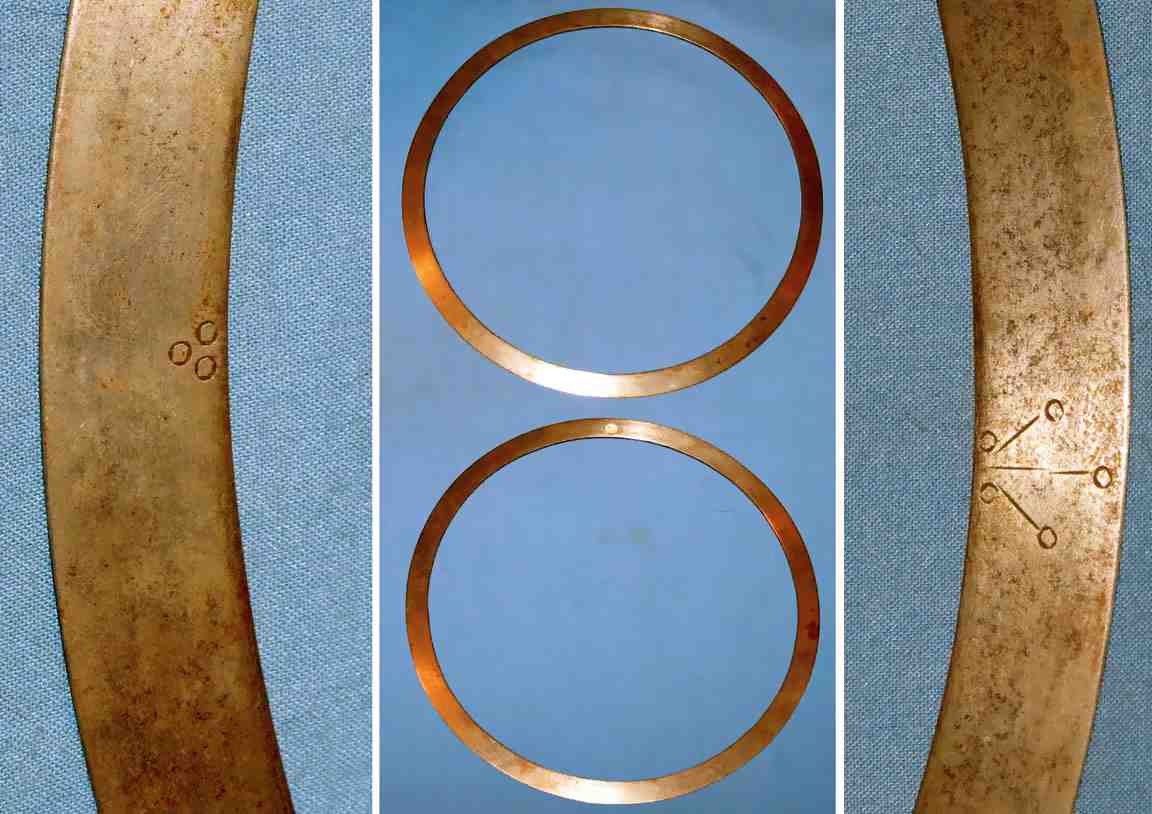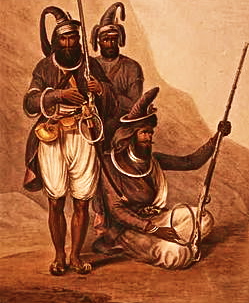| |
|
Maharao Umed Singh of Kota - Hunting
at Night |
|
Shield (Dhàl) - Early 19th Century
Hide, Gilt Bronze, Glass, Lacquer, Velvet, Jewels |
| |
Katar Thrusting Dagger - 1852
Indian Rajasthan
Steel and Gold |
Katar Thrusting Dagger - 17th to 18th Century
Indian Mughal
Steel, Gold, and Ruby |
|
| |
Spear - 18th Century
North Indian - Steel and Gold |
Shafted Weapons |
Spear - 17th century
North Indian - Steel and Gold |
|
|
Hunting Sword - 18th to 19th Century
Indian Rajasthan
Steel, Gold, Velvet and Wood |
|
Drawing of a Sword
Jaipur, India . . . circa 1883
Watercolor on Paper |
|
Maharaja of Kashmir's (Sword in Scabbard)
(Circa . . . 1864)
Steel, Diamonds, Emeralds, Rubies and Velvet |
|
Maharaja - Jeweled Sword Hilt |
|
Maharaja - Presentation Sword
Jaipur, India . . . circa 1902
Steel, Gold, Diamonds and Enamel |
|
Ankus (Elephant Goad) - 17th century
South Indian Shafted Implement/Weapon
Steel and Brass |
|
Ankus - Jaipur, India . . . circa 1870
Gold, Natural Colorless Sapphires and Enamel |
Indian Elephant Goad
(Circa 1800) |
|
Shah Jahan Hunting with Trained Cheetahs - Hunts
were a Peacetime Training for War |
|
Maharaja "Tiger Claw" Weapon
Circa 17th Century (Steel) |
|
This Tiger Claw belonged to Shivaji
It was used by the Maratha leader to kill the Bijapuri commander Afzal
Khan. |
|
Mysore, India . . . circa late 18th Century
Leather, Quilted Silk, Steel and Gold |
|
Udaipur, India . . . circa early 19th Century
Hide, Velvet, Copper, and Gilded Copper |
|
Udaipur, India . . . circa 18th Century
Layers of Hemp, Velvet, Silk, and Gilded Copper
Armor is of the Mewar Hazar-mukhi (Thousand Headed)
Variety
Technique: Layers of Textile are Bound Together with Gilded Brass Rivets |
|
Maharao Durjan Sal of Kota - Hunting Lion |
|
Flying Rings: Chakram, Quoit
|
The Indian throwing ring knife variously known as the Chakram,
Chakra, Chackram, Chackrum, Chakar, Chakram Quoit, Quoit is one of the
least understood of all weapons . Generally thought to be the exclusive
provenance of the Sikhs, Egerton shows a broad bladed example of 6"
diameter in his landmark 1880 study identified as Aboriginal and
non-Aryan Tribes of Central Indian and the Andaman Islands. These
generally are called the "Wild Tribes" and are known to have produced
fine metal work in their weapons, particularly battle axes. Allowing for
a broader use of the chakram, he describes the vast variation in
construction and quality encountered. Furthermore, it seems quite likely
that the Sikhs (founded in 1469) may have adapted the weapon from the
refugees of the earlier Aryan invasion. Egerton also states that the arm
that is exclusively peculiar to this sect (Sikhs) is the quoit, but he
goes on to remove any doubt that it is a true weapon and used in battle.
The Sikhs became martial under Guru Govind Singh and they used the
Chackram effectively against the Moghul dynasty. The Chackram has a
history that is as old as Indian civilization itself. It's usage is
embedded in Indian myth and legend. In the epics . . . the Mahabharata
for instance . . . an Asura trying to get heavenly nectar from the moon
had his head chakra-ed off. Still he tries to swallow the moon and
succeeds ever so often before the moon escapes through the cut neck . .
. an eclipse myth. Sculptures and paintings of many gods and godesses
show the chakra being twirled. |
 |
 |
|